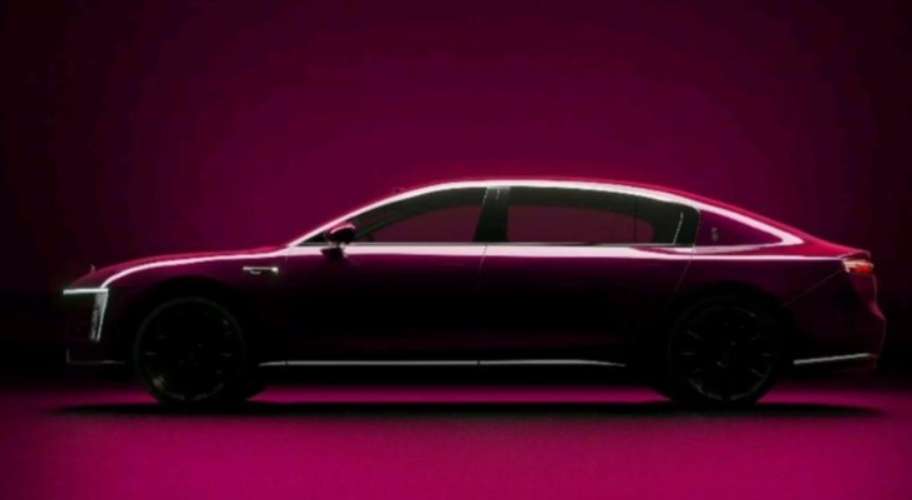Tesla FSD Enters the Chinese Market
Advertisements
The recent announcement by Tesla regarding the Full Self-Driving (FSD) feature's deployment in China marks a significant milestone in the realm of autonomous driving technology.On February 25,the company confirmed that it had begun rolling out this long-anticipated software update,version 2024.45.32.12,to select customers in the region.This development follows initial market speculation that something major would come soon.It seems the time has finally arrived for Tesla to introduce advanced autonomous capabilities to its Chinese users.
Within this updated software,select Tesla owners can access the new City Navigation on Autopilot (NOA) feature,which includes functionalities like traffic light recognition,autonomous lane changing,and intersection recognition.This expansion not only signifies a leap forward for Tesla but also reflects a broader move in the automotive industry towards electrification and intelligent vehicle technologies.It's noteworthy that this access will be extended only to those customers who have invested 64,000 RMB in the FSD package—a hefty price that previously only allowed them limited functionalities,reducing the appeal of the purchase for some new customers.
Historically,even though these users paid for the FSD suite,they found their experience to be limited to features worth about half that price,mainly the Enhanced Autopilot (EAP) functions.This left many feeling somewhat shortchanged,as they could enjoy limited innovations or only minimal upgrades over EAP functionalities.Now,however,with the introduction of FSD capabilities,Tesla appears to be aligning its offerings more closely with what is available to customers in North America.
It is important to clarify that even with these improvements,the FSD feature in China is still classified as a "supervised" mode,meaning that drivers must remain vigilant and entirely responsible for their vehicle.Elon Musk,Tesla's CEO,has hinted at the eventual rollout of an "unsupervised" version,but for now,that remains uncertain.The branding of the update as "FSD Smart Assist Driving" emphasizes its current status and reflects the cautious approach Tesla is taking in introducing its autonomous features to the vast Chinese market.
As Tesla's FSD features debut in China,a significant shift is taking place in the automotive landscape.With various car manufacturers jockeying for position in the self-driving technology race,the question on many minds is who will ultimately set the standard for future mobility.Some interpret Tesla's incremental approach as a measure to avoid any regulatory backlash while gaining valuable feedback on the product's performance in a demanding environment.
Currently,only a select few Tesla owners in China have received the FSD update invitation,and many vehicles in Tesla's expansive fleet have yet to get the upgrade.This gradual rollout has sparked discussions about the significance of Tesla's ambitions in the market,particularly as the company has previously indicated interest in complying with local data security requirements.Back in April 2024,the Shanghai Gigafactory announced that its produced vehicles had cleared all necessary compliance checks.This move made Tesla the first wholly foreign-owned automaker to meet China's stringent data storage and processing standards.
The eagerness surrounding the FSD rollout can be traced back to early discussions within the tech industry.In July 2024,during a conference call,Musk suggested that markets like Europe and China were expected to receive regulatory approvals by the end of the year,yet he remained non-committal about fixed timelines. This kind of cautious optimism exemplifies the complex landscape Tesla must navigate in a country known for its rigorous regulatory framework.
This kind of cautious optimism exemplifies the complex landscape Tesla must navigate in a country known for its rigorous regulatory framework.
Adding to the intrigue,a few months later in September,a handful of Tesla owners reported an unexpected appearance of an "FSD button" on their vehicle's dashboard—though the button remained inoperative,leading many to speculate it was part of some unannounced internal testing.The purpose of this testing could be to prepare for a broader launch and gauge market reaction as other competitors in the autonomous sector began to ramp up their own ambitious plans.
The competitive environment for autonomous driving technology within China is becoming increasingly intense.Various domestic car manufacturers seem to be adjusting their strategies preemptively,knowing all too well that Tesla's FSD introduction is imminent.Companies like BYD have made swift maneuvers with their new "God Eye" system,marketed under the "smart driving equality" philosophy,which thrust their automated driving features into almost every model they produce.
Similarly,other notable players in the market,such as Geely and Huawei’s automotive division,are not sitting by quietly.Geely is expected to unveil their own smart driving initiatives shortly,while Huawei marks its territory by marketing L3-level autonomous driving capabilities,a claim that indicates a push into higher-tiered automation to compete directly with Tesla's offerings.With these companies rapidly devising innovative strategies,it becomes clear that the tide is shifting within the sector.
Interestingly,some speculate that the response to Tesla's pricing for FSD features—64,000 RMB—could significantly influence other players in the market.As the price point is substantial in the context of the technology offered,many question how sustainable such pricing will be against competitors who may provide similar functionalities for less.The entire industry is undergoing a transformation that necessitates constant adaptation and responsiveness to changes in technology and consumer expectations.
According to industry experts,a lot of the current offerings from Chinese companies rely on L2-level autonomous driving solutions,which may utilize specific algorithms for operation.The contrast here with Tesla's end-to-end model highlights the potential advantages the latter could maintain,provided that advancements in artificial intelligence and deep learning continue to develop at their current pace.This evolution in technology suggests that Tesla's FSD could further differentiate itself in terms of performance and user experience.
In summary,Tesla’s FSD feature's arrival in China might very well represent a pivotal moment—not just for the company itself but for the automotive industry at large.The moves taken by Tesla,competitors,and the regulatory bodies that oversee these transformations in the Chinese market will shape the framework for future mobility.As each company hustles to refine its offerings and adapt to evolving consumer demands,the competition will only heat up,ultimately benefiting consumers looking for innovative driving solutions.
Post Comment